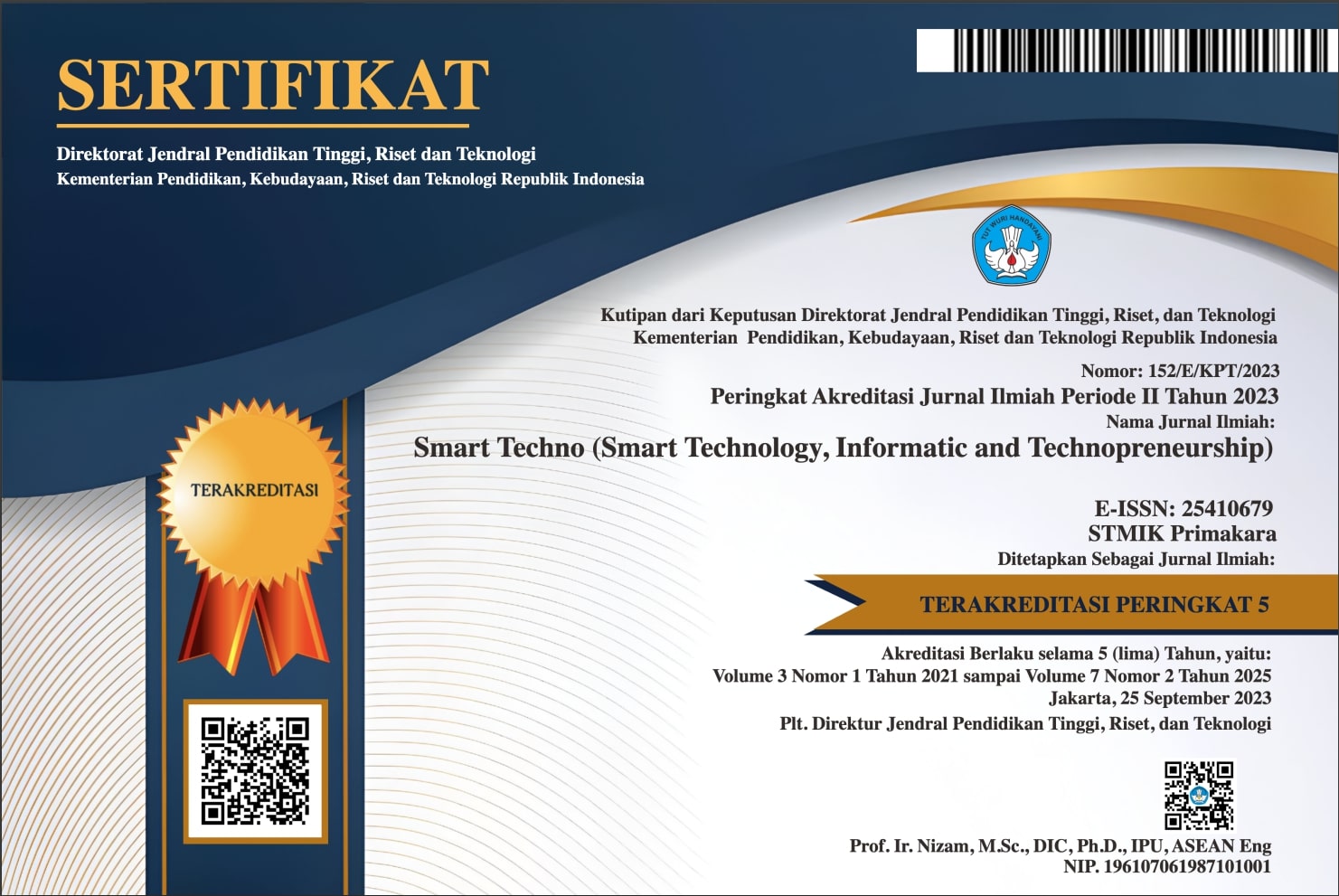Implementasi Business Intelligence Untuk Menentukan Trend Penjualan Barang (Studi Kasus: PT. Menikmati Distribusi)
Abstract
This study aims to analyze the implementation of Business intelligence to determine the trend in sales of goods in response to the needs of the company, make decisions, and choosing sales strategies. Business intelligence (BI) is one of the solutions dealing with company needs, especially analyzing and providing data access to help make or take better decisions. There are several stages could help the company to facilitate the decision making process, such as database design, data warehouse design, ETL (Extract, Transform, and Load) process, OLAP cube making and followed by report making. By seeing the report analyzes, the result of this study is the sale of goods in the Makassar area has the lowest contribution compared to other areas. The lowest sales by outlet can be seen from the O Voult Legian outlet which is ranked last with the fewest sales. Therefore, based on the results above the area or outlet that has the lowest contribution must be treated specifically. Conducting promotions and discounts is one of the objectives to increase the number of orders from customers with a greater range.
Downloads
References
T. A. Retno, K. T. Ditha, and D. I. Rosa, “Penerapan Business Intelligence Pada Sistem Informasi Penjualan Barang,” pp. 103–110, 2014.
Z. Nur and I. Mukhlash, “Implementasi Business intelligence Pada Manajemen Report Bank XYZ,” J. Sains Dan Senni Pomits, vol. 3, no. Bisnis Intelijen, pp. 16–21, 2014.
P. Sulistyorini, “Business Intelligence Dan Manfaatnya Bagi Organisasi,” Maj. Ilm. IC Tech, vol. 5, no. 2, pp. 74–81, 2010.
R. Akbar, D. Rasyiddah, M. Anrisya, N. F. Julyazti, and S. Syaputri, “Penerapan Aplikasi Power Business Intelligence Dalam Menganalisis Prioritas Pekerjaan di Indonesia,” J. Edukasi dan Penelit. Inform., vol. 4, no. 1, p. 54, 2018.
Revansta Rahma Putri, “PENERAPAN BUSINESS INTELLIGENCE SEBAGAI PENDUKUNG ANALISIS PRODUKTIVITAS KARYAWAN BAGIAN PENJUALAN (STUDI KASUS: NORTHWIND),” J. Chem. Inf. Model., vol. 53, no. 9, pp. 1689–1699, 2018.
V. Tjahyono, Y. Oslan, S. Kom, and D. D. Dwiyana, “Sistem Pemilihan Jadwal Matakuliah Berbasis Mobile Dengan Metode Agglomerative Nesting Dan Multi Kriteria.”
A. Mirza, “Knowledge Discovery in Database Untuk Model Online Analytical Processing (Olap) Data Kemiskinan,” J. Ilm. Matrik, vol. 17, no. 2, pp. 99–108, 2015.
Ricky Akbar, Ria Oktaviani, Shabrina Tamimi, Syifa Shavira, dan Tri Winda Rahmadani, "Implementasi Business Intelligence untuk menentukan tingkat kepopuleran jurusan pada Universitas”, Jurnal Ilmiah Informatika., vol. 2, no 2, 2017
Tiara Retno Ariani, Ken Ditha Tania, dan Dwi Rosa Indah, "Penerapan Business Intelligence Pada Sistem Informasi Penjulan Barang PT. Winsa (Studi Kasus Di PT.Winsa Palembang)”, pp. 103-110, 2017.
Ridho Darman," Implementasi Business Intelligence Untuk Menentukan Trenekspor Perikanan Nasional Menggunakan Software IBM Waston Analytics”, Jurnal TAM, vol. 9, no. 1, 2018
Copyright (c) 2020 Smart-Techno

This work is licensed under a Creative Commons Attribution 4.0 International License.
Authors who publish with the Smart Techno agree to the following terms:
- Authors retain copyright and grant the journal the right of first publication with the work simultaneously licensed under a Creative Commons Attribution License (CC BY-SA 4.0) that allows others to share the work with an acknowledgment of the work's authorship and initial publication in this journal.
- Authors are able to enter into separate, additional contractual arrangements for the non-exclusive distribution of the journal's published version of the work (e.g., post it to an institutional repository or publish it in a book), with an acknowledgment of its initial publication in this journal.
- Authors are permitted and encouraged to post their work online (e.g., in institutional repositories or on their website) prior to and during the submission process, as it can lead to productive exchanges, as well as earlier and greater citation of published work. (See The Effect of Open Access)







